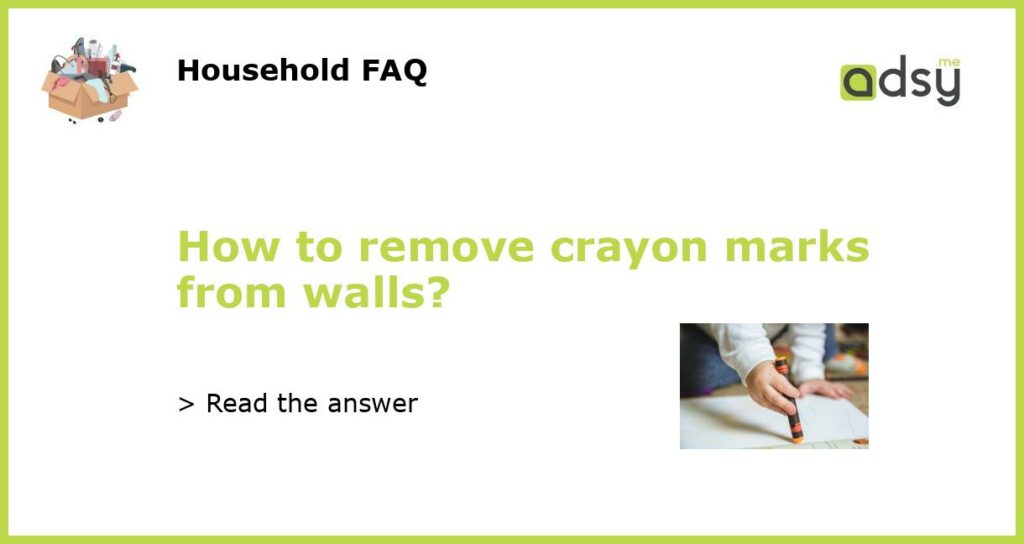Understanding the types of crayons and wall surfaces
Before attempting to remove crayon marks from walls, it’s crucial to understand what type of crayon was used and the wall surface. There are different types of crayons, such as wax or oil-based crayons, and they can leave different types of marks on various surfaces, including painted walls, wallpaper, and wood. Make sure to identify the type of crayon and the surface before proceeding with any cleaning methods.
Using common household items to remove crayon marks
If the crayon stains are relatively light, common household items, such as baking soda, vinegar, or rubbing alcohol, may work. Baking soda can be made into a paste with water and rubbed onto the crayon marks, then wiped clean with a cloth. Vinegar can be dabbed onto the marks with a cloth, then wiped clean with a damp cloth. Rubbing alcohol can be used in a similar way by soaking a cloth in it and wiping onto the mark.
Using a magic eraser to remove crayon marks
If the crayon stains are more stubborn, a magic eraser can be a handy tool to have. These melamine foam sponges are designed to remove tough stains and marks from various surfaces, including walls. Wet the eraser with water, squeeze out the excess water, and gently rub it onto the crayon marks. Be careful not to scrub too hard, as this can damage the wall surface.
Using commercial products to remove crayon marks
If the previous methods don’t work, there are various commercial products available specifically designed to remove crayon marks from walls. Examples include Mr. Clean Magic Eraser Extra Durable, Goo Gone, and Krud Kutter. These products can be found at most hardware and home improvement stores. It’s important to follow the instructions carefully and test the product on a small, inconspicuous area of the wall first to ensure it doesn’t cause damage.
Preventing future crayon marks on walls
To prevent future crayon marks on walls, there are a few options. One is to hang up a large whiteboard or chalkboard for kids to draw on instead of using walls. Another is to designate a specific wall or area for kids to draw on, covering it with paper or a protective mat to keep the wall surface intact. It’s also a good idea to keep crayons, markers, and other drawing materials out of reach when not in use to prevent unsupervised drawing on walls.






